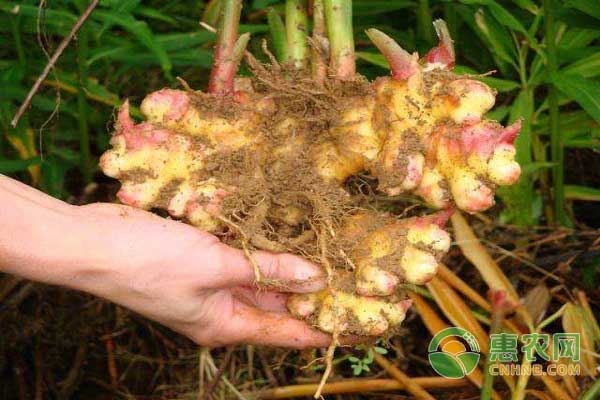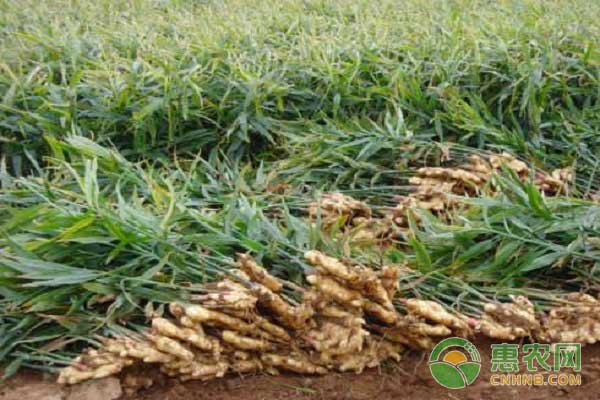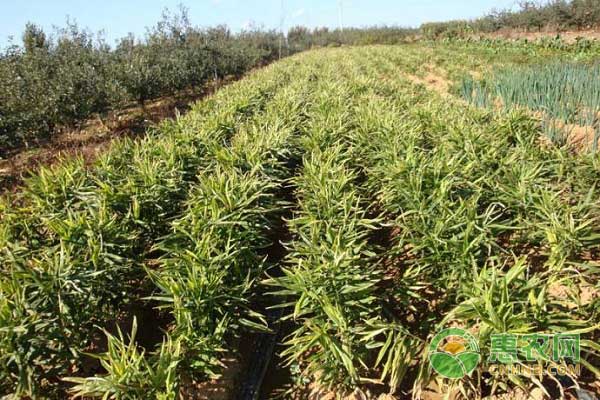The most common disease of ginger is rotten neck disease. The disease is highly contagious and has a wide range of diseases. It is the most serious disease of ginger. The disease is very serious in some domestic production areas, which makes the vegetable farmers suffer, so the ginger is bad. Is there no effective prevention and treatment skills for neck disease? Today, the cherry girl teaches you a few tricks to prevent the rotten neck! Interested vegetable farmers friends to take a look with the cherry girl!
First, symptom description and performance
Ginger rotten neck disease is the most serious disease in the process of ginger cultivation. This disease is also called ginger root rot, which is a contagious disease caused by Pythium infection. It is highly contagious, mainly affecting the roots and ginger. The diseased ginger is initially water-stained, and the interior of the yellow-brown is gradually softened and rotted, and the smudged white juice smells bad.

Second, the law of incidence
First, there must be the existence of the source of the disease (the diseased ginger and the soil); the second is to have suitable environmental conditions for the disease. The third is the growth of ginger itself. Under the premise of the source of the disease, temperature (especially soil temperature) and rainfall are two important factors leading to the epidemic of the disease, especially after the rain, and the most serious occurrence of sun exposure. In addition, if the ginger block itself has poor resistance, for example, the ginger block is in the expansion period, and the outer skin has a wound, it is easy to infect and form a disease. It has been proved by practice and experiment that when the average temperature reaches about 24 °C, the disease becomes popular. When the temperature is 26-31 °C, there is sufficient water volume, and when the field water is formed, the disease develops rapidly. When the temperature is high and the humidity is fine, the weather is fine, especially the change of soil temperature is beneficial to the epidemic.
In addition, the amount of rainfall is also related to the morning and evening of the rain. From June to July, if the rainfall reaches 100 mm in the field within 10-12 days, the diseased plant will appear, and the peak of the disease will occur once in the field about 1 week after the heavy rain. The incidence of continuous cropping, low alfalfa, soily weight, no covering, and partial application of N fertilizer is high; the central diseased plant appears early, and the number of times of re-infection of the pathogen is also serious.
Third, the prevention and treatment program
Formula 1: [Jiangyan No. 1 1] 150 times + [Auxiliary No. 1] 750 times + [Dead 2] 150 times; Formula 2: [Jiangyan No. 1 1] 150 times + [Auxiliary No. 1] 750 times + [bacterial agent No. 1] 150 times;
Specific usage:
Spray: The entire plot is sprayed, and the leaves, stems, stem base and ground are sprayed in place.
Root area: 3-5 meters of plants in the affected area and its incidence, previous ward, low-lying area and lower head, and expand the scope appropriately.
Irrigation root dosage: 8 to 1 kg of water per planting solution, mainly perfusion.
Note: 1. After the first watering after the disease control, and after the first soiling, it is necessary to consolidate the drug once again.

2, dead or serious plants, dug out the diseased points and surrounding plants to continue root irrigation. When removing, be careful not to pull the seedlings directly by hand, and use the iron shovel to shovel and bury the soil around the roots of the big ginger to prevent the spread of the bacteria. Ginger grisea is easy to occur in an acidic soil environment. It is recommended to apply quicklime to the pit after eradication. In order to strengthen the effect of soil treatment, it is recommended to backfill the sand with the sand and flush it with the surface, and then use plastic film to cover the surrounding compaction. After watering, the water flows directly from the film to reduce the probability of pathogen transmission. For large areas of death, it is necessary to isolate the diseased key area, and the healthy area of ​​the circle is properly circled, and then covered with lime film.
Fourth, prevention and treatment technology Q & A
1. Can Jiang Yan disease and rotten neck disease be cured?
A: 1) rotten neck disease (also known as stem-based rot), can be treated refers to ginger does not rot or only a few ginger rot, root irrigation can kill germs, curb scars continue to rot, good ginger may be able Continue to grow, this only means that there are already buds growing, and there is no disease on the aerial part of the bud.
2) Jiang Yan disease has been cured and can only control the spread. Because once the symptoms are manifested, the diseased ginger must have received necrosis, so the dead tissue can not be repaired and can not be cured. It can only kill the pathogens in the diseased plants and prevent them from infecting other plants.
2. How many times do you need to take the medicine?
A: The disease is a soil-derived disease. It has many characteristics, such as rapid reproduction and rapid infection. Therefore, if you want to see a significant effect, you need to take the medicine about 3 times. Because the medicine is used once, the liquid reaches a limited area, so you can't get it. If the germ can not be killed, it will continue to approach the plant again, so it is necessary to consolidate the medication again, usually 3 times, once every 4 days.
3. After medication control, do you need to use it again?
Answer: 1) If you need to cultivate soil: then you need to re-consolidate 1-2 times after the soil is cultivated, because the soil is one: the root system is wounded; the second is: there is new soil again near the ginger plant, and the soil bacteria will infect the injured root system. May cause illness, so it is necessary to consolidate medication;
2) Repeatedly, in the past years, it is recommended to spray and consolidate the graves and continuous rainy days.

4. How to properly handle the diseased soil?
A: When the stems and leaves of the ginger are found to be wilting, they should be removed decisively. When removing, be careful not to pull the seedlings directly by hand, and use the iron shovel to shovel and bury the soil around the roots of the big ginger to prevent the spread of the bacteria. Ginger grisea is easy to occur in acidic soil environment. It is recommended to apply quicklime in the pit after eradication to sterilize. In order to strengthen the effect of soil treatment, it is recommended to use sand to backfill into the pit, flush with the surface, and then cover it with plastic film, compact it around. After watering, the water flows directly from the film to reduce the probability of germ transmission. . For large areas of death, it is necessary to isolate the diseased key area, the diseased area in the circle, and the healthy plants are properly circled, and then applied with lime and covered with film.
5. How to protect after the rain?
A: Ginger disease is a bacterial disease that is mainly infested from wounds. The accumulation of water in the plot after the rain will inevitably cause the base of the stem of the plant and the ginger to be immersed in the water, and the roots will appear. The disease resistance of the plant will reduce the damage of the bacteria. Therefore, the field drainage should be prepared to drain the water in time, and the soil should be loosened in time to improve the permeability of the soil and reduce the occurrence of diseases.
6. How to prevent further planting next year?
1) Spraying the local soil disinfection of the planting ditch: [Jiangyan No.1] 150 times liquid + [Auxiliary No. 1] 1500 times dilution using spray planting ditch.
2) After emergence, uncovering the film, the main stem-based rot, spray + spray stem base: [Jiangyan No.1] 150 times liquid + [Auxiliary No. 1] 1500 times, used 2-3 times, 7 days apart about.
3) In the expansion period, the main anti-Ginger disease spray + key area irrigation root: [Jiangyan No. 1] 150 times liquid + [Auxiliary No. 1] 1000 times + [dead 2 good] or [bacterial agent No. 1] diluted use Spray regularly. When irrigating, the focus is on the annual disease area and low-lying area.
7. What should I pay attention to when fertilizing?
A: Increase the application of phosphorus, potassium fertilizer, organic fertilizer (must be decomposed) and biological fertilizer or fungicide (such as: rich agricultural bacteria agent No. 1), do not apply more nitrogen fertilizer.
The above is some of the control techniques of the ginger rotten neck that the cherry girl has arranged, and I hope that it will help the vegetable farmers who are worrying about the rotten neck!
Yancheng Rongtai Labware Co.,Ltd , https://www.shtestlab.com